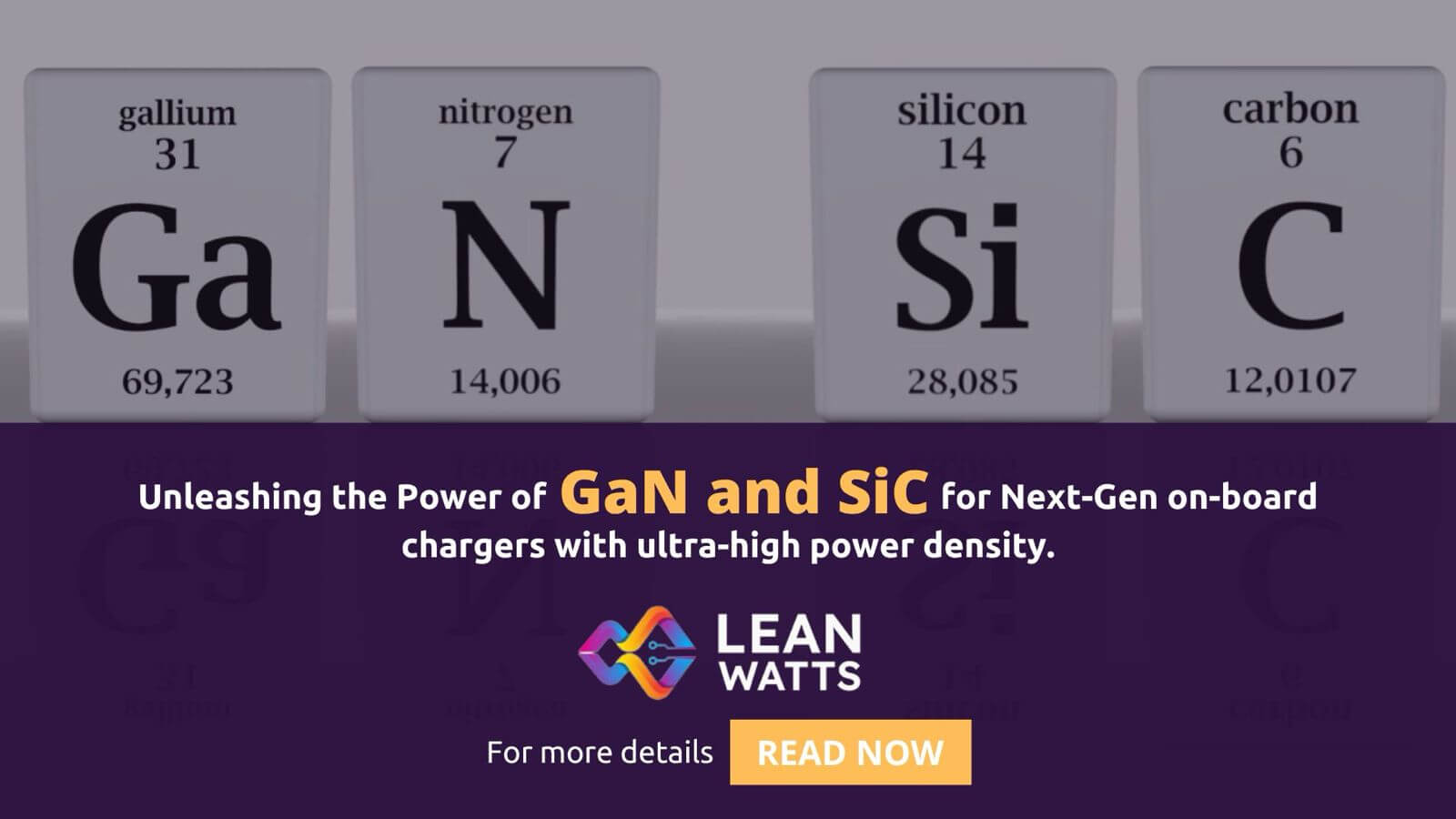
In today’s fast-paced world, electric vehicles (EVs) are quickly becoming the norm. However, as more of us make the switch from petrol to electric, the technology that powers these vehicles also needs to evolve. Enter GaN (Gallium Nitride) and SiC (Silicon Carbide) – two materials that are set to revolutionise the way we charge our vehicles. If you’ve ever marvelled at how much faster and smaller phone chargers have become over the years, then you’ll appreciate what these materials can do for EVs.
Let’s break it down and explore how GaN and SiC are paving the way for next-generation on-board chargers with ultra-high power density, making EV charging faster, more efficient, and more compact.
The Need for Better Chargers
We’ve all experienced that sinking feeling when our phone’s battery is low, and we’re nowhere near a charger. Now, imagine that on a much larger scale – say, with your vehicle. While today’s EVs are incredibly advanced, the time it takes to charge them still leaves something to be desired. Traditional silicon-based chargers have done a decent job so far, but as more powerful EVs hit the market, these chargers are starting to show their age.
This is where GaN and SiC come into play. These materials are far more efficient than traditional silicon, allowing for chargers that are not only faster but also smaller and lighter. Just like how modern USB-C chargers have become more powerful yet more compact, GaN and SiC promise to do the same for EVs.
What Are GaN and SiC, Anyway?
If you’re not familiar with GaN and SiC, don’t worry – you’re not alone. These materials might sound a bit technical, but their benefits are easy to understand.
GaN (Gallium Nitride): Imagine your vehicle charger could work faster without getting too hot. GaN allows for higher switching frequencies, which means it can handle more power without wasting energy as heat. This results in chargers that are smaller, lighter, and faster than what we’re used to.
SiC (Silicon Carbide): While GaN is great for speed and efficiency, SiC is the muscle behind the operation. SiC can handle higher voltages and temperatures, making it perfect for more demanding tasks. If you’ve got a high-power EV, SiC ensures your charger can keep up without breaking a sweat.
The Benefits of GaN and SiC in EV Chargers
So, why should you care about GaN and SiC? Here’s how these materials are set to change the game for EVs:
1. Ultra-High Power Density
One of the biggest advantages of GaN and SiC is their ability to pack more power into a smaller space. If you’ve noticed how today’s phone chargers are tiny compared to the bulky bricks of the past, you’ll understand why this is a big deal. For EVs, this means that onboard chargers can be smaller and lighter, freeing up space in your vehicle and making it more efficient.
But it’s not just about saving space. Ultra-high power density also means that your vehicle can charge faster. Just as modern USB-C chargers can power up your devices in a fraction of the time, GaN and SiC enable your EV to get back on the road quicker.
2. Faster Charging Times
Waiting for your vehicle to charge can be a bit of a drag, especially if you’re in a hurry. With GaN and SiC, the wait could soon be a thing of the past. These materials allow for faster switching speeds, which translates to quicker charging times. It’s a bit like upgrading from a slow phone charger to a fast one – suddenly, you’re not waiting around anymore.
For EV owners, this means less time spent at charging stations and more time enjoying the drive. Whether you’re planning a long road trip or just need a quick top-up, GaN and SiC make it all happen faster.
3. Improved Thermal Management
If you’ve ever noticed how some electronics get hot when they’re working hard, you’ll appreciate this benefit. Both GaN and SiC are excellent at managing heat, which means your charger stays cooler, even when it’s working overtime. This is similar to how modern USB-C adapters stay cool even when charging multiple devices at once.
For EVs, this improved thermal management means the vehicle’s charging system doesn’t need bulky cooling systems. This not only reduces the weight of the vehicle but also improves overall efficiency, as less energy is wasted on keeping things cool.
4. Increased Reliability and Longevity
Nobody likes to deal with faulty equipment, especially when it comes to something as important as your vehicle. SiC, in particular, is known for its durability. It can withstand extreme conditions without breaking down, ensuring that your EV’s charging system remains reliable for years to come.
Think of it like having a phone charger that lasts much longer than usual, even with heavy use. With SiC, you’re getting a charging system that’s built to last, giving you peace of mind on every journey.
Real-World Impact: What This Means for You
So, how does all of this tech talk translate into real-world benefits? Imagine being able to charge your EV in the same amount of time it takes to grab a coffee. With GaN and SiC, this could soon be a reality. Faster charging times mean less time waiting around, while the increased efficiency and smaller size of chargers could lead to more space inside your vehicle for the things that matter.
Moreover, as these materials become more widely used, the cost of EVs could decrease, making them more accessible to everyone. Just like how USB-C has become the standard for charging our devices, GaN and SiC are set to become the standard for charging our vehicles.
The Future is Bright with GaN and SiC
GaN and SiC aren’t just buzzwords – they’re the future of EV charging. By enabling faster, more efficient, and more compact chargers, these materials are making electric vehicles more practical and accessible than ever before. As technology continues to advance, we can expect even greater improvements in charging times, vehicle range, and overall efficiency.
So, the next time you plug in your vehicle, remember that the future of charging is already here, and it’s powered by GaN and SiC. With these materials leading the charge, the road ahead for electric vehicles has never looked brighter.
Modified Conclusion
As we’ve explored, GaN and SiC are not just buzzwords—they represent the future of EV charging by enabling faster, more efficient, and more compact chargers. These advancements are not merely theoretical; they are at the core of Leanwatts’ latest product innovations. We’re excited to introduce our new range of cutting-edge chargers: the Quark GAN-750W, designed specifically for two-wheelers, and the BOSON 3.3kW charger, which caters to two, three, and four-wheelers, supporting a wide voltage range options from 30V to 440V.
These products mark Leanwatts’ bold foray into the world of GaN and SiC technology, setting new standards in the EV charging landscape. The QUARK-GAN and BOSON chargers are engineered to break through existing technological barriers, delivering unmatched power density, faster charging times, and superior thermal management—all in a more compact and reliable form. With these innovations, Leanwatts is not just keeping pace with the rapid evolution of electric vehicles; we are driving it forward, ensuring that the future of mobility is not only more accessible but also more powerful and efficient.
